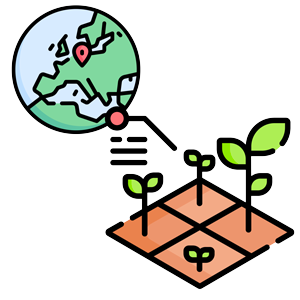
WP1
Coordination and project management
WP2
Enhancing the diversity of FGR in use and conservation based on common garden trials
WP3
Next-generation common garden trials to promote biodiversity and climate change adaptation
WP4
Forest management and genetic diversity
WP5
Breeding with and for high genetic diversity
WP6
Provision of adequate FRM for the future forests of Europe
WP7
FGR-related economy-governance-practice for biodiversity and ecosystem services in Europe
WP8
Communication and Information Systems expansion and linkWP1
The main objective of WP1 is to provide the structure and conditions for the successful implementation and completion of the OptFORESTS project, by maintaining management structures, enabling internal communication and monitoring progress and quality control.
WP2
The work of WP2 is to create a Europe-wide harmonised dataset on phenotypic traits from common garden trials and to provide guidelines and recommendations for increasing the genetic diversity of forest genetic resources in use and conservation, thus improving the adaptability of forest tree species to a changing climate.
WP3
The work of WP3 consists of designing and establishing new common garden trials to promote biodiversity, climate change adaptation and the use of diverse forest reproductive materials (FRM). It also identifies, characterises and suggests unique tree lineages, including those from marginal habitats, for ecosystem restoration, diversification of production systems and conservation.
WP4
In WP4, the consortium partners involved in its tasks are engaged in quantifying the effects of tree selection through thinning and developing a genetic module for practitioner training software (I+) to assess the genetic impacts of management decisions. In general, they develop forest genetic resource-oriented management and restoration options to anticipate forest decline and restoration needs and test them on long-term experimental sites.
WP5
The objectives of WP5 are to provide a new understanding of genetic variation and co-variation in fitness traits related to climate change and biomass properties for a diverse set of European forest tree species. The main work in this WP is to develop a toolbox for the development of FRM of tree species that have previously been neglected despite their value for biodiversity and resilience of European forests.
WP6
The main focus of WP6 is to identify the main barriers to efficient FRM production associated with nurseries and to implement novel research to support sustainable seed supply and plant production in Europe. It also aims to develop regional pathways to expand nursery production capacity in order to facilitate wider adoption, scale-up and ultimately increase nursery production capacity.
WP7
The objectives of WP7 are to estimate the biophysical and the economic values of ecosystem services (ES) associated with the new use and management of forest genetic resources (FGR), including their changes and risks; and to outline sustainable and innovative solutions for biodiversity and ES enhancement using FGR, considering socio-economic/institutional/technical-ecological factors and ecological diversities.
WP8
The main scope of work of WP8 aims at ensuring the expansion and interoperability of the European Commission's Forest Reproductive Material Information System (FOREMATIS); making recommendations for creating a long-term archive of geo-referenced information on the origin and use of forest reproductive material (FRM), fostering dialogue between actors and stakeholders, and disseminating project results to end-users.